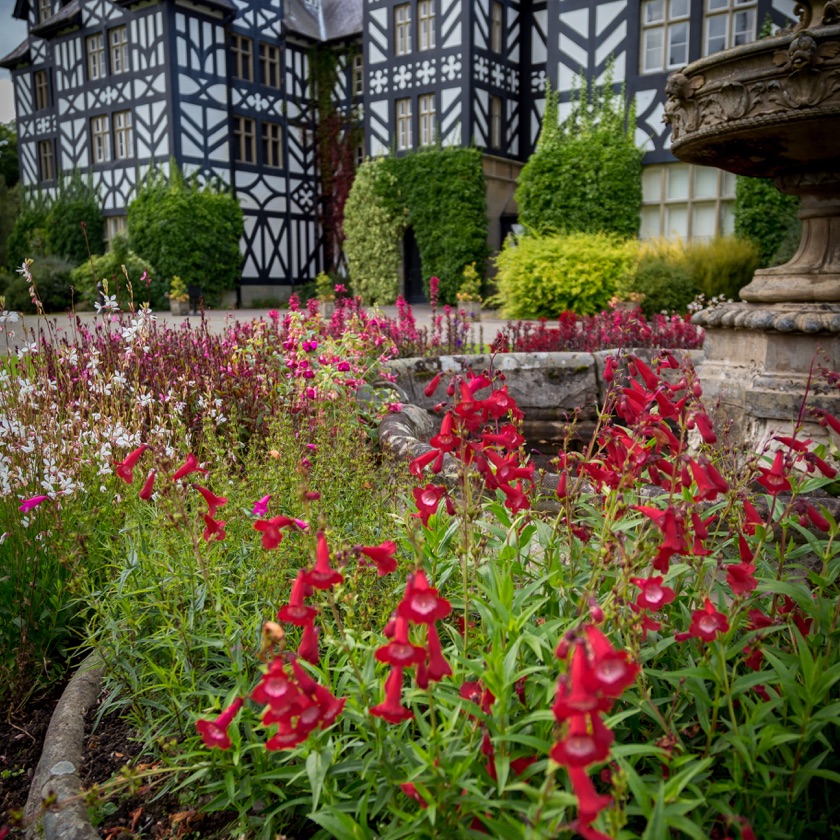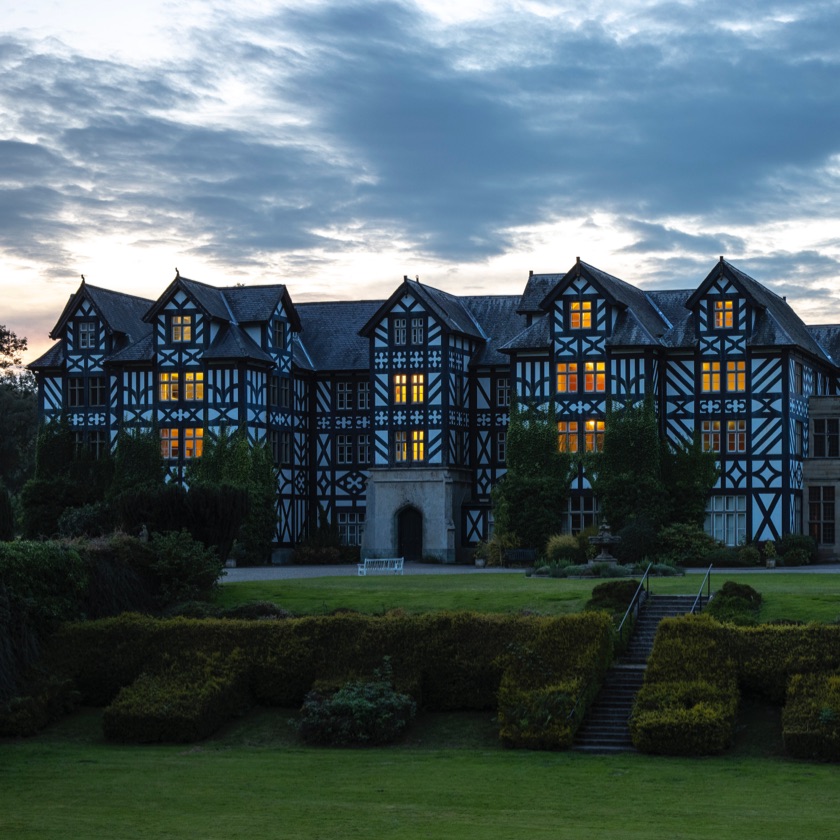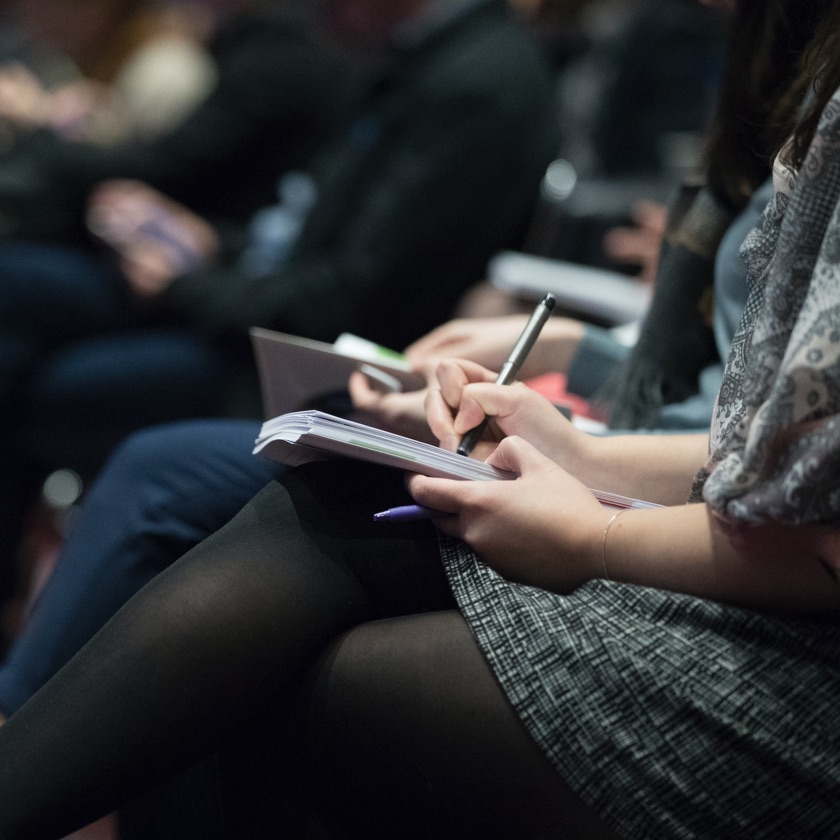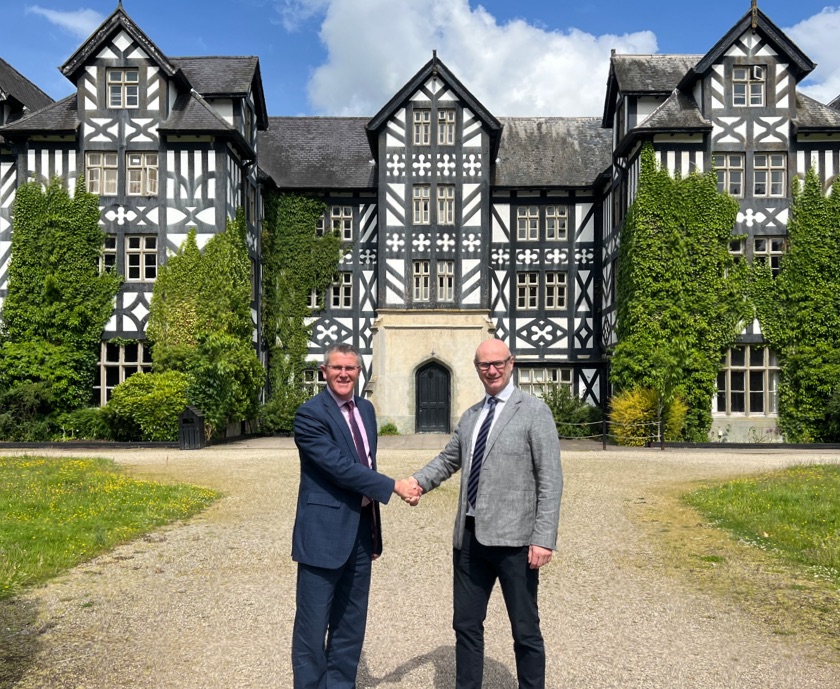
CEO David Chell with Ben Rogers Jones
We are thrilled to announce that Wales largest fine art auction house, Rogers Jones & Co are embarking on a new partnership with Gregynog Hall.
Their company is establishing a new regional office in sight of our wonderful gardens and café. And they we will be holding fine art auctions in the celebrated Music Room. One hundred years ago, the Music Room was the focus of conferences, concerts, music festivals and the display of their Old Master, British and Impressionist masterpieces. So, it will be incredibly exciting to see prestigious works of art on show in the Music Room a century later.
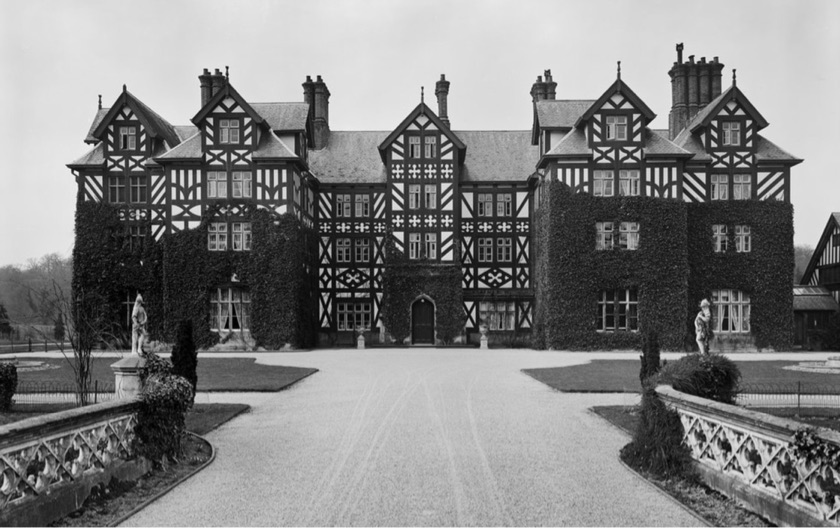
The Rogers Jones & Co office at Gregynog Hall will act as a regional hub for customers wishing to enter items into one of their auctions and for collecting items that they might have purchased at an auction. While members of their experienced valuation team can be on hand to offer free appraisals and valuations by appointment at their Gregynog office.
Within easy reach from all directions, Gregynog Hall stands on the outskirts of the village of Tregynon. It is 14 miles from the market town of Welshpool and five miles from the Newtown by-pass, which provides quick access to Shrewsbury and Shropshire, Wrexham and northeast Wales, Cheshire, Llandrindod Wells, Leominster and the rest of mid-Wales and the borders. Liverpool, Birmingham and the Midlands are easily reached by car or train to Newtown.
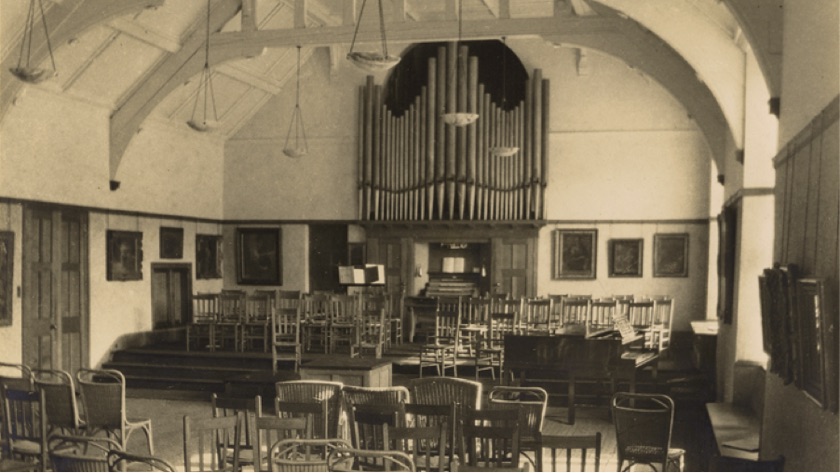
The auction office is conveniently located at the archway entrance to the courtyard, next to the car park and in view of Gregynog’s welcoming café. There are two designated free-to-park spaces for customers immediately adjacent to the office. Visitors may wish to enjoy Gregynog’s Grade I listed gardens or explore the estate, with walks though the Dingle and the Dell, the ancient Great Wood, or to the lily lake, which was created by Gwendoline Davies in the 1920s to replicate the series of Monet waterlily paintings in her collection. An instance of nature imitating art. However you spend your time, the auction experience at Gregynog promises to be a special occasion for vendors and bidders alike.
To mark our new partnership with Rogers Jones & Co, the auction house we will be holding a double bill of auctions on Saturday 27 July 2024, with their flagship Welsh Sale, followed by our inaugural British & European Art sale.
Ben Rogers Jones
— Auctioneer and Partner
On Friday 26 July 2024, the day before the two auctions, there will be a special viewing of both these sales. The Music Room will be open at 1pm for visitors to browse. At 3pm there will be a live musical interlude and complimentary wine and refreshments. Viewing will close at 7pm. All are welcome to this unique art and music event – at a venue renowned for the visual arts and music-making in Wales.
Art Collecting at Gregynog 1924-2024
It is fitting that Rogers Jones & Co. are staging their forthcoming Welsh Sale and first-ever auction of British and European Art at Gregynog Hall.
Over five decades, Gregynog was home to the sisters Gwendoline and Margaret Davies, pioneer art collectors and heirs to the fortune amassed by their entrepreneurial grandfather, the industrialist David Davies of Llandinam.
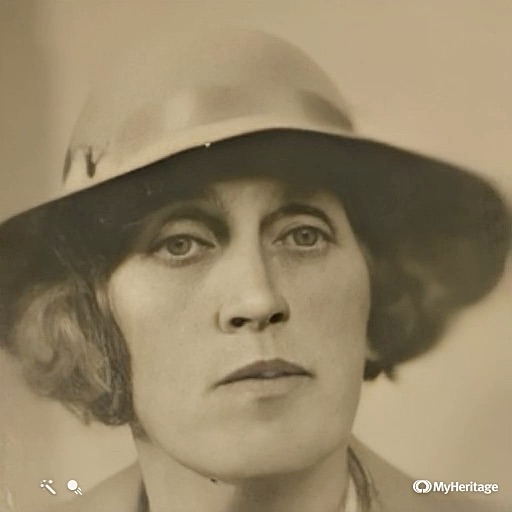
One hundred years ago, Gregynog became the sisters’ home. Its size and generously proportioned rooms afforded them ample space to display their collection of Old Master, 18th- and 19th-century British and 19th-century French Realist, Impressionist and Post-Impressionist paintings, as well as large-scale bronzes by Rodin. Artworks were complemented by contemporary Arts and Crafts furniture from Morris & Co., Heals, and Dryad of Leicester, as well as commissioned furnishings from Cotswolds School designer Peter Waals, and Paul Matt of the Brynmawr Furniture Company, reflecting Gwendoline Davies’s vision to imbue Gregynog with ‘the beauty of simplicity and usefulness.’
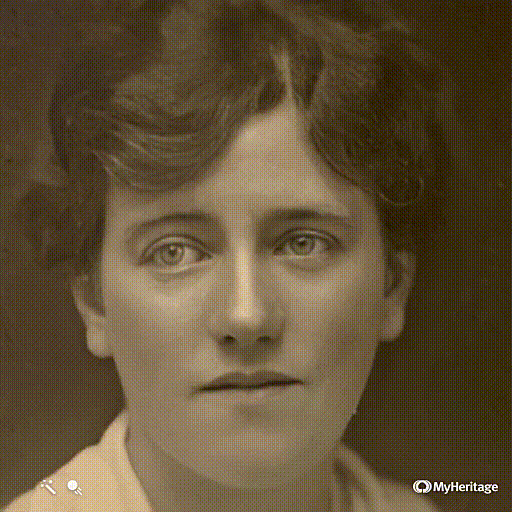
Renovations of Gregynog Hall were completed in 1924. Sydney Greenslade, architect of the National Library of Wales in Aberystwyth, had overhauled its decorative schemes and designed two stunning Art Deco bathrooms. That year, the sisters made their final payment to Edwin Stanley Hall, architect of Liberty’s flagship store on Regent Street, for extending the billiard room to create a music room with a new two-storey link block from the Hall and a bedroom annexe to accommodate visitors. Following his work at St George’s Chapel, Windsor, master organ builder Frederick Rothwell completed a bespoke organ for Gregynog, built to specifications by Sir Henry Walford Davies.
Even though Gregynog was now the Davies’s home, a full calendar of residential events took place that year. Given that the sisters possessed a deep social conscience, those first meetings included gatherings of the Welsh Federation of University Women’s Camps for Schoolgirls, Welsh School of Social Science, National Council of Music, League of Nations Union, and Montgomery County Nursing Association.
In this centenary year, Rogers Jones’s Welsh Sale will take place in the famous Music Room where once hung artworks by Botticelli, El Greco, Daumier, Manet, Monet, and Cezanne. Now Rogers Jones is bringing the best of Welsh art to collectors in Wales and beyond, from what was the beating heart of art collecting in 20th-century Wales.

As collectors, Gwendoline and Margaret Davies were not seasoned auction-goers themselves. Through the agency of their advisor Hugh Blaker – artist, connoisseur, collector, dealer, curator, and critic, younger brother of their governess-cum-companion Jane Blaker – the sisters acquired artworks from dealers in London and Paris, and, to a lesser extent, from London salesrooms. Blaker represented them at auctions as it was not considered fitting for well-bred ladies to operate in the cut-throat male-dominated wheeling-and-dealing art market. While the sisters, who owned an apartment in Buckingham Gate, London, attended viewings, Blaker bid on their behalf. Unlike today’s buyers who enjoy the privacy of online bidding, the sisters relied on Blaker to assure their anonymity. The Times journalist reporting on the ‘frenzied’ bidding at Sotheby’s for Turner’s watercolour View of Heidelberg with Rainbow mistakenly pronounced Blaker to be ‘one of the greatest collectors of the day.’
Gwendoline and Margaret Davies never planned for Gregynog to become their home when they became sole owners of the hall and 750-acre estate in 1920. They set out by creating a residential arts and crafts facility for the training of soldiers and those affected by war. Out of that initiative, however, only the printing of fine books endured. On 4 December 1924, Gregynog Press’s second book Poems of Herbert Vaughan, printed by hand with engravings by its controller Robert Ashwin Maynard and press artist Horace Walter Bray, was published in a numbered edition of 500 copies.
While the sisters’ pace of collecting slowed as a result of their ownership of Gregynog, purchases between 1920 and 1924 nonetheless included paintings by Botticelli, El Greco, Frans Hals, Gainsborough, and Burne-Jones, works on paper by Turner, Cezanne, Pissarro, Vlaminck, and Daumier, as well as bronzes by Degas. Collecting all but ceased in 1924. New ventures at Gregynog and their increasing concern for social causes diverted their attention from their art collections. Gwendoline, who with her sister had been raised and lived by the strict codes of Calvinistic Methodism, stated in a letter to a friend that she was uncomfortable spending large sums of money on art when she witnessed so much need among the people of Wales.
Through the bequest of their art collections to the National Museum of Wales, their patronage of music festivals, the Gregynog Press, and funding of the Brynmawr Furniture Company, the sisters aimed to make art, craft, design and literature of the highest standards available to the people of Wales. As a student at Swansea School of Art, Ceri Richards attended a ‘transformative’ and ‘exhilarating’ summer school conducted by Blaker and Maynard at Gregynog in 1923. ‘I was staggered,’ Richards recalled, ‘by the sight of the superb Impressionist and Post-Impressionist paintings hanging on the walls, and the bronzes by Rodin. I was fascinated most of all by Monet. Imagine their effect on someone who’d dreamed of great painting but had seen none at all.’
After the death of Gwendoline Davies in 1951, Margaret Davies resumed collecting. She sold paintings by Turner and Monet to fund a Modern British collection that was to include paintings by young artists from Wales; among them John Elwyn, Esther Grainger, Ceri Richards, Josef Herman, Ray Howard Jones, Leslie Moore, Fred Uhlman, and Kyffin Williams – names familiar to followers of Rogers Jones’s Welsh Sale.
A regular at the annual Llandinam shoot in the 1950s, Kyffin Williams recalled how, when ‘the weather became too bad for a shoot, [they] went to Gregynog.’ He remembered Margaret Davies as ‘a gentle soft-voiced woman, diffident yet welcoming. We wandered through the house past Gauguins, Renoirs, Van Goghs, Monets and some Old Masters as well. The best of Sickert, John and Gilman could be seen beside the work of contemporary artists. I so much enjoyed those visits that on one day of the week I always prayed for rain.’
One hundred years on, Gregynog’s Music Room is filled with the best of Wales’s visual and decorative arts. Gwendoline and Margaret Davies would be delighted to see art appreciation and collecting in Wales flourishing at Gregynog, content in the knowledge that art collecting is no longer the exclusive domain of a privileged few.
The sisters’ legacy endures as Gregynog Hall embarks on a new chapter in its history under the custodianship of the independent charitable Gregynog Trust. In its commitment to safeguard and support access to culture, history and nature, it continues to uphold the sisters’ values.
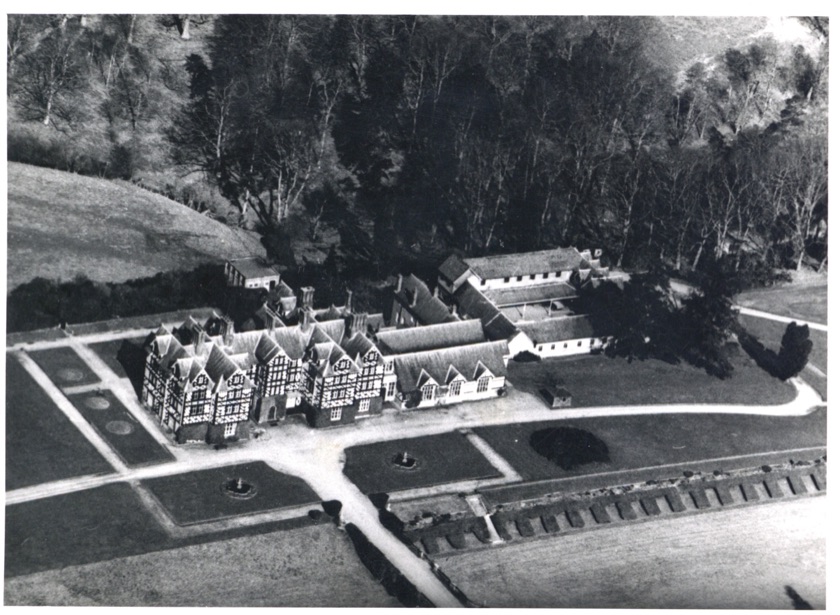
For 60 years following the death of Margaret Davies in 1963, Gregynog was a popular intercollegiate residential conference facility run by the University of Wales. The academic market greatly diminished with the breakup of the University of Wales in 2009 and the nationwide introduction of student fees in 2011. Cash-strapped universities, and impecunious students (who now maintain a job or two to fund their tuition fees, rent and subsistence) could no longer afford to come in large numbers.
And so, faced with the significant challenge of securing a sustainable future for the Hall and Estate, we seek to diversify our activities, broaden our reach, and engage with ever-wider audiences to share in all that Gregynog has to offer. We are delighted through our partnership with Rogers Jones & Co. to be welcoming to Gregynog new and existing collectors to view, and hopefully acquire for themselves, some of Wales’s finest artistic achievements.
Professor Robert Meyrick
— Art historian and Trustee of Gregynog
